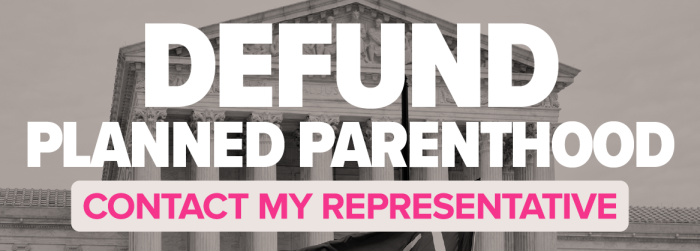The Hyde Amendment — credited with saving millions of lives — stands in the way of unfettered taxpayer-funded abortion on demand, and it should stay that way, because when taxpayers fund abortion, abortions increase.
A pro-life rider created in 1976, the Hyde Amendment prohibits most taxpayer funding of abortion at the federal level but allows for it in cases of rape or incest, or when the physician determines the pregnant mother’s life is at risk.
While federal dollars cannot be used to fund all abortions, Medicaid dollars sent to the states may be used as each state decides. Statistically, when women do not pay for their own abortions, they tend to have more of them.
In essence, taxpayer-funded abortion appears to incentivize more abortion.
State coverage of abortion through Medicaid
As of March 12, 2025, the pro-abortion Guttmacher Institute claimed that “19 states [Alaska, California, Connecticut, Delaware, Hawaii, Illinois, Maine, Maryland, Massachusetts, Minnesota, Montana, Nevada, New Jersey, New Mexico, New York, Oregon, Rhode Island, Vermont, and Washington] have a policy or court order that directs state Medicaid funds to pay for abortions under all circumstances….”
The pro-abortion Kaiser Family Foundation (KFF) reported that 20 states fund abortions, “exceeding federal requirements,” adding Colorado in addition to the 19 listed by Guttmacher.
Only “7 states [Alaska, Kentucky, New York, North Carolina, Oklahoma, South Dakota, and West Virginia] require providers to indicate the method of payment” Guttmacher claims.
Last year, Guttmacher reported that 71% of abortion clients who received “care” in states where “Medicaid can be used to cover the costs of abortion paid $0 out of pocket for their pills or procedure, compared with only 10% of all abortion patients in states where Medicaid is prohibited from covering abortion.”
In February of 2024, Guttmacher claimed that “Medicaid usage for abortion care was highest among respondents in Medicaid states who identified as Black (70%), Latinx (66%), had one or more prior births (70%–77%), those having second-trimester abortions (75%) and those with the lowest incomes (78%).”
State v. Federal
“According to the Department of Health, Education and Welfare, between 250,000 and 300,000 women had abortions last year paid for by Medicaid…. The cost is between $45 million and $55 million a year,” the New York Times reported in 1976.
The following year, 1977, the U.S. Supreme Court had ruled that tax-funding of abortions could be limited. Despite the Hyde Amendment, taxpayer dollars still fund some abortions, according to expenditure reports at Medicaid.gov:
- 2017: $65,077 federal dollars went toward abortion (over $37,000 was paid by federal dollars and nearly $28,000 was the state share)
- 2018: $71,938 federal dollars went toward abortion (nearly $46,000 was paid by federal dollars and $26,000 was the state share.)
- 2022: $85,545 federal dollars went toward abortion ($64,069 was paid by federal dollars and $21,476 was the state share.)
- 2023: $64,282 federal dollars went toward abortion ($41,458 was paid by federal dollars and $19,613 was the state share.)
Live Action News has previously analyzed federal taxpayer funding for 2015 and 2016 under Medicaid assistance programs.
Another way taxpayers fund abortions is under Obamacare (the Affordable Care Act). According to HealthCare,gov, abortion is “sometimes” covered and “plans may have different restrictions. Some offer no coverage or coverage with restrictions,” the website reads.
The U.S. Government Accountability Office (GAO) revealed that in 2014, 1,036 taxpayer-funded Obamacare health exchange insurance plans covered elective abortion and a report published by the Charlotte Lozier Institute (CLI) found that “an estimated 69% (892 plans) cover[ed] elective abortion for the 2021 enrollment period.”
Funding abortion increases abortion
A survey published by Guttmacher in 2017 revealed that women who have taxpayer-funded abortions tend to have more abortions. It also revealed that the majority of those women were using contraception when they became pregnant.
A 2017 report from the pro-abortion Reproductive Health Investors Alliance showed the percentage of abortions paid for by taxpayers in states that do not cover abortions under Medicaid was just 1.5%. However, in states that used Medicaid to cover abortions, that figure jumped to 52.2%.
An analysis published in 2018 by the Guttmacher Institute, a former “special affiliate of Planned Parenthood, found that “Medicaid was the second-most-common method of payment [for abortion], reported by 24% of abortion patients.”
A 2024 study from Perspectives on Sexual and Reproductive Health found that Medicaid was the “most common type of insurance coverage among abortion patients,” and according to study author Rachel K. Jones, “A majority of people with incomes below the federal poverty level (FPL) in the United States have Medicaid insurance coverage, and this is also the most common type of insurance reported by abortion patients (44%).”
“Several studies suggest that Medicaid coverage of abortion may increase access to [abortion], insofar as it is associated with higher abortion rates. In 2000, the abortion rate for women with Medicaid health insurance was four times higher in states where Medicaid covered this care compared to those where it did not. After Medicaid expansion in Oregon, the incidence of Medicaid-financed abortion increased from 13.4 per 1000 women to 16.3 per 1000 between 2008 and 2016,” Jones added.
Jones, a Guttmacher researcher, has served on the board of directors of the National Abortion Federation (NAF), the Abortion Care Network (ACN), and the pro-abortion Society of Family Planning (SFP).
A separate 2024 study found that “In Maine and Illinois, implementing state Medicaid coverage of abortion contributed to an immediate overall increase in abortion access (as seen by a rise in monthly procedure volume at the time of the policy’s implementation), a decrease in patient price (by 36% in Maine and 44% in Illinois) after policy implementation as compared to pre-implementation, and overall improved access among people of color. Conversely, when West Virginia discontinued coverage, access to care decreased, patient price increased by 130%, and the share of abortion procedures among people of color decreased” (emphasis added).
Taxpayer-funded abortion tied to eugenics
Big Abortion, which is tethered to eugenics, often discusses taxpayer-funded abortion under the auspices of assisting poor women. In other words, in order to ‘solve the problem‘ of having limited means to take care of a child, Big Abortion wants mothers to “legally” kill their preborn children on the taxpayer’s dime.
Population control was the goal of proponents of abortion and Planned Parenthood. In fact, eugenicist and former Planned Parenthood president Dr. Alan Guttmacher (who actually initiated abortions within Planned Parenthood) once told a symposium: “There is no question that the most effective way of reducing population growth is by unlimited abortion” (emphasis added).
Guttmacher’s aim was not the “empowerment” of women or aiding the poor.
Ease of access and location to abortion facility has played a role in the increase of abortions overall but especially among minority groups. Taxpayer-funded abortion is not “reproductive justice”; it is eugenic population control.
In part two, Live Action News will discuss which states have expanded to pay for abortion with state Medicaid dollars.








